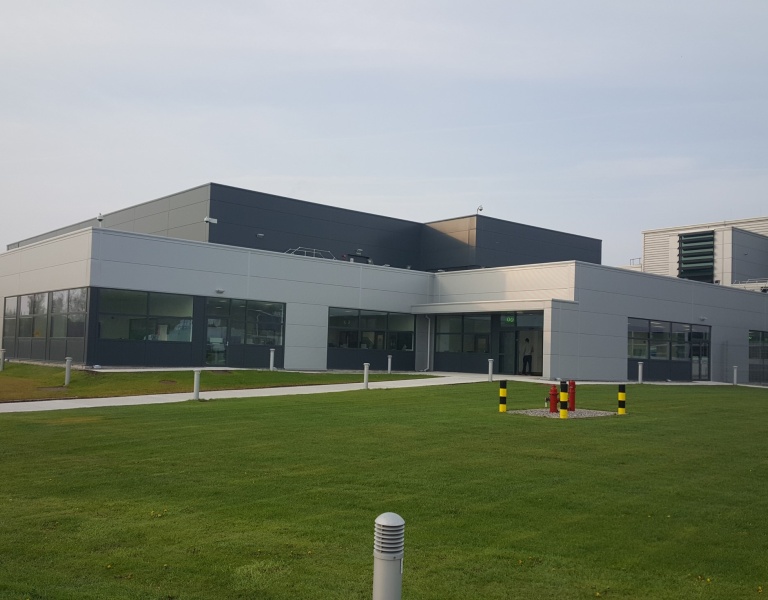MSD Carlow makes Energy Efficient Design a priority
Carlow-based pharmaceutical company uses energy efficiency design principles in its newly constructed QO laboratory.
Background
MSD Carlow is an advanced, high-volume facility for the aseptic fill and finish of human vaccines and biologic therapies. The facility is designed to handle multiple products and has the capability to formulate and aseptically fill both vials and syringes.
This site is now home to several state-of-the-art production facilities, laboratories and temperature-controlled warehousing units.
The Project
The new QO Laboratory Building in MSD Carlow was designed and constructed as a 2,311m2 standalone facility complementing an existing Production Building. The functional spaces include an open plan laboratory, lab support areas, office spaces and a dedicated plantroom.
Sustainability in the built environment is a key goal in the development of MSD facilities. With support from SEAI, MSD followed the Excellence in Energy Efficient Design (EXEED) process.
The EXEED standard encourages innovation in design projects to help future-proof the investment, by optimising energy performance, improving operational energy costs and carbon emissions and improving competitiveness.
The building is now EXEED certified.
EXEED Process
MSD Carlow's Energy Team worked with energy efficiency design expert, Optien.
They carried out an energy balance at the outset of the project to determine the building baseline. Identifying the significant energy uses in the building provided the basis on which to challenge the design from a sustainability perspective.
The structured process of EXEED allowed the MSD team to delve deeper into the proposed design and leverage the skills and abilities of a wider group of stakeholders.
The commitment from the Leadership team to obtain EXEED and LEED (Leadership in Energy and Environmental Design) certification for the building was the driving force behind the project. This commitment ensured that the design process considered energy and sustainability in all elements of the project.
The energy efficiency design measures carried out included:
- Maximise building fabric improvements by taking a "fabric first" approach
- Installation of high-performance solar control glazing
- Installation of Variable Air Volume HVAC system
- Challenge the filtration requirements of the HVAC systems
- More efficient lab equipment schedule signed off
- High efficiency pumps, motors and fans installed (on Triple E register)
- Comprehensive metering of the system for ongoing management of the building
MSD appointed Richard Morrison from Optien as the Energy Efficient Design (EED) Expert for this project.
The energy efficient design process brought sustainability to the forefront of this project. A key learning from the process is that the early engagement of all stakeholders in the consideration of energy efficient design for capital projects, will ensure success.
What's next?
The learnings from the EXEED and LEED implementation process have been used to enhance the design procedures across the MSD network through the development of the MSD Sustainability Methodology STD-D-123. This process is now a requirement for all projects that impact the organisation's sustainability impact and energy use.
